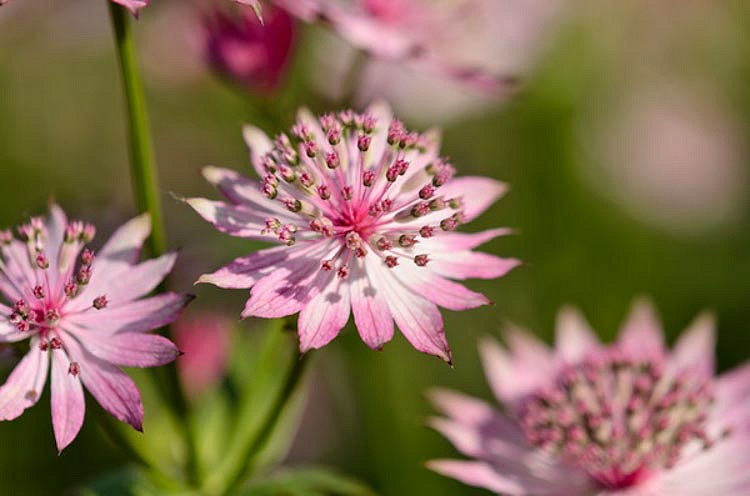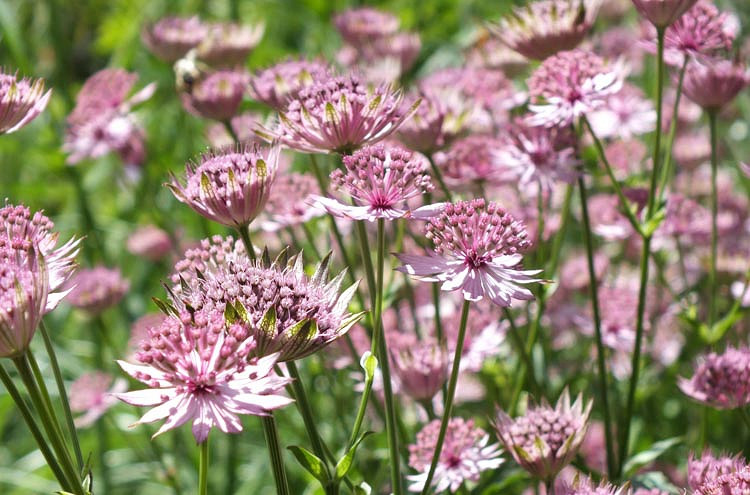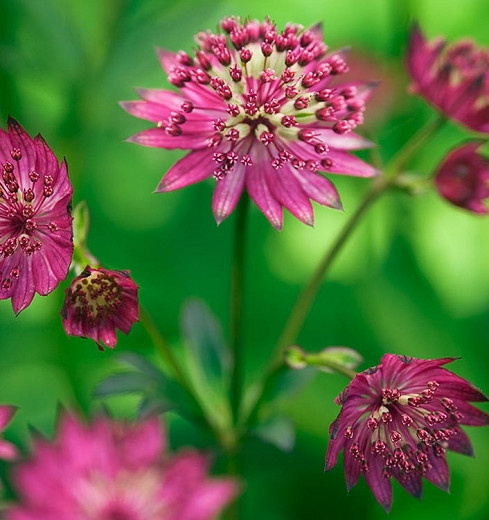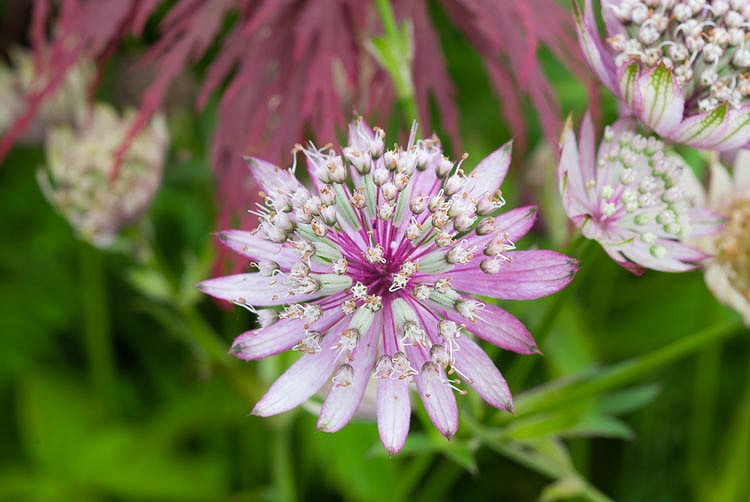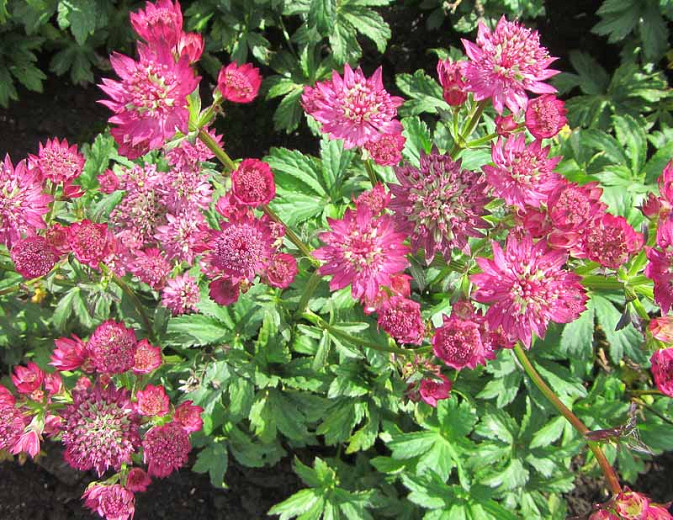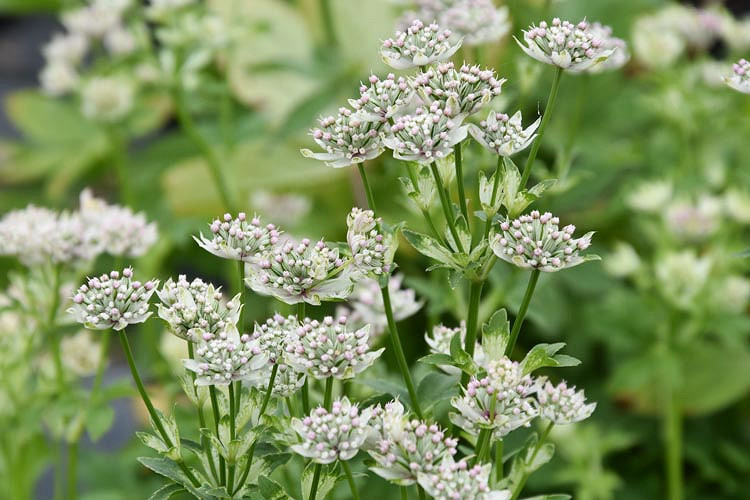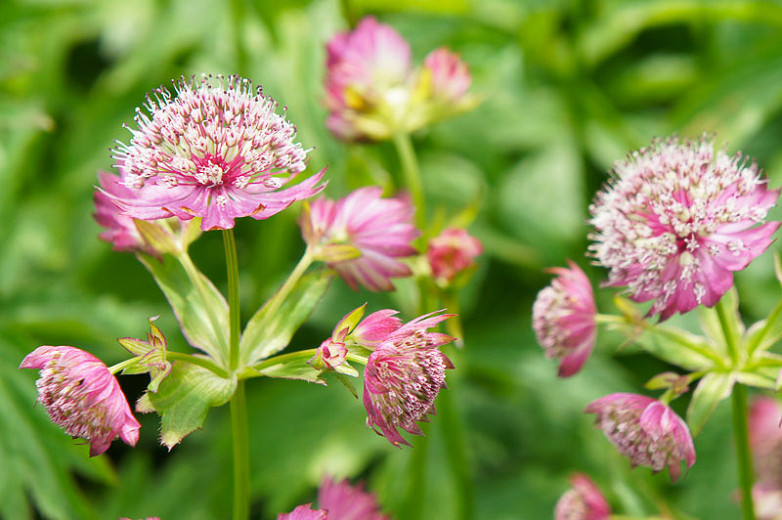Astrantia major Roma (Great Masterwort)
So exquisite and delicate, Astrantia major ‘Roma’ never fails to amaze onlookers! How to resist the intricate beauty of its blossoms: tiny pink flowers crowded together in a dome-shaped flowerhead, just like pins on a cushion, and surrounded by an elegant ruff of papery bracts.
So exquisite and delicate, Astrantia major 'Roma' never fails to amaze onlookers! How to resist the intricate beauty of its blossoms: tiny pink flowers crowded together in a dome-shaped flowerhead, just like pins on a cushion, and surrounded by an elegant ruff of papery bracts. They are borne on long wiry stems, well above the rosette of attractive deep green maplelike leaves. The flower color is a subtle combination of soft pink, green and white.
- Recipient of the prestigious Award of Garden Merit of the Royal Horticultural Society.
- Blooms for weeks from late spring to early summer, and sporadically throughout the summer where conditions are to its liking.
- Spreading slowly from the rootstock, it has a neat habit and grows up to 18-24 in. tall (45-60 cm) in a clump of deeply divided leaves.
- Thrives in full sun or part shade in rich, medium to wet, well-drained soils. Soils need to be kept consistently moist. Best performance occurs in cool summer climates as Astrantias do not like very hot, humid, or dry conditions.
- A vital ingredient of herbaceous borders, cottage gardens, and woodlands. Great weavers, Astrantias mix well with other plants and associate beautifully with Ornamental Grasses, Sedums, and many other perennials. Plant them in drifts or at the border front of mixed borders where their attractive blooms can be appreciated. This plant is also valued for the excellent quality of its cut flowers, whether in bouquets or dried floral arrangements.
- Easy to grow, deer-resistant, disease, and pest-free, and wet soil tolerant, Astrantia is a perennial plant that is rich in many qualities aside from its good looks!
- Easily grown from seeds sown fresh. Deadheading will prolong flowering and prevent self-seeding. Astrantias do spread a little but can easily be held back. Dividing clumps help maintain vigor.
- Propagate by division in spring
Requirements
| Hardiness | 4 – 7 |
|---|---|
| Heat Zones | 1 – 7 |
| Climate Zones | 4, 5, 6, 7, 8, 9, 14, 15, 16, 17, 18, 19, 20, 21, 22, 23, 24 |
| Plant Type | Perennials |
| Plant Family | Astrantia – Masterworts |
| Exposure | Full Sun, Partial Sun |
| Season of Interest | Spring (Late)Summer (Early,Mid,Late) |
| Height | 1' – 2' (30cm – 60cm) |
| Spread | 1' – 2' (30cm – 60cm) |
| Spacing | 12″ – 18″ (30cm – 45cm) |
| Water Needs | Average |
| Maintenance | Average |
| Soil Type | Chalk, Clay, Loam, Sand |
| Soil pH | Acid, Alkaline, Neutral |
| Soil Drainage | Moist but Well-Drained, Poorly Drained |
| Characteristics | Dried Arrangements, Cut Flowers, Plant of Merit, Showy |
| Tolerance | Deer, Wet Soil |
| Attracts | Butterflies |
| Garden Uses | Beds and Borders, Ponds and Streams, Wall-Side Borders |
| Garden Styles | City and Courtyard, Informal and Cottage |
